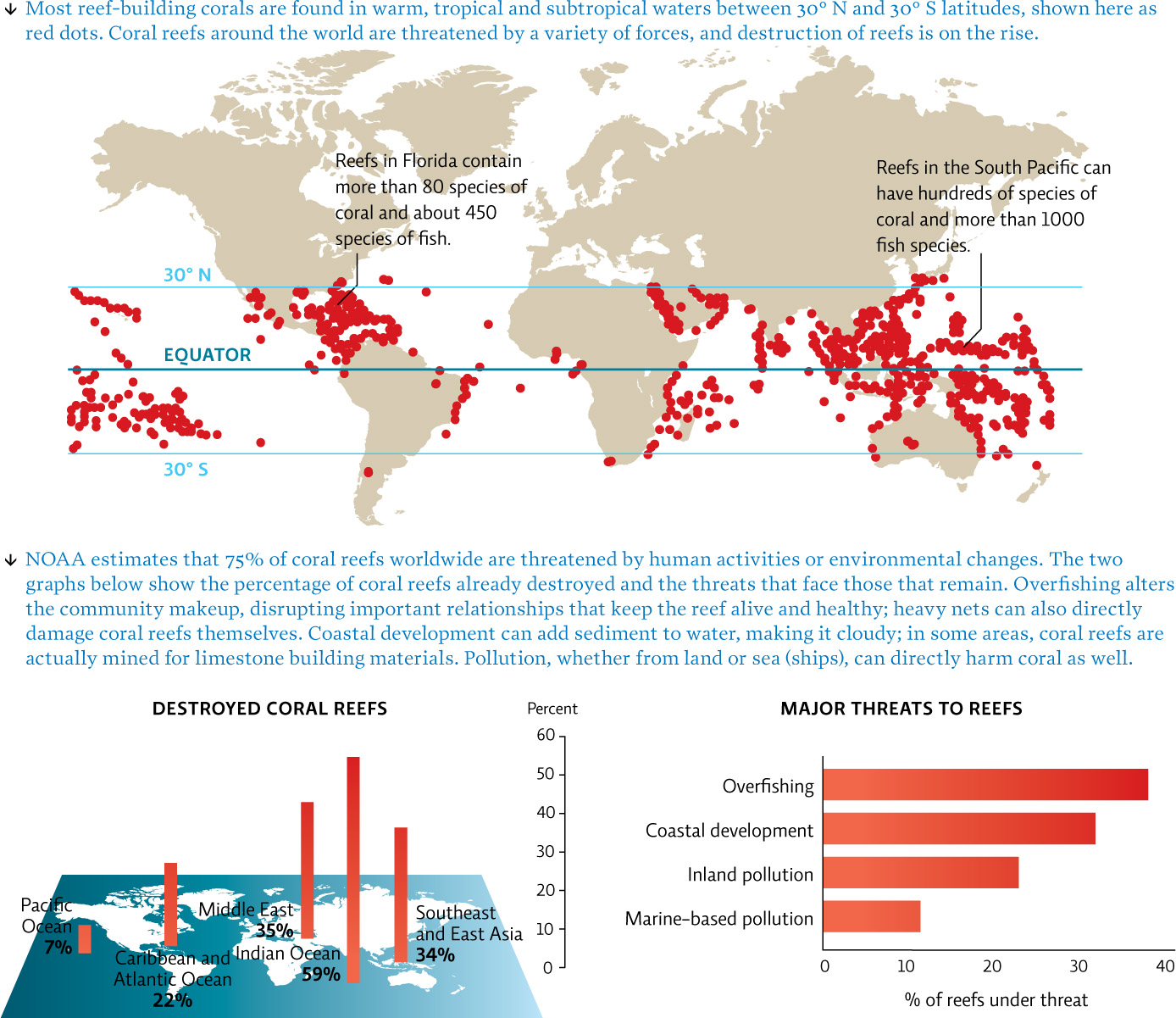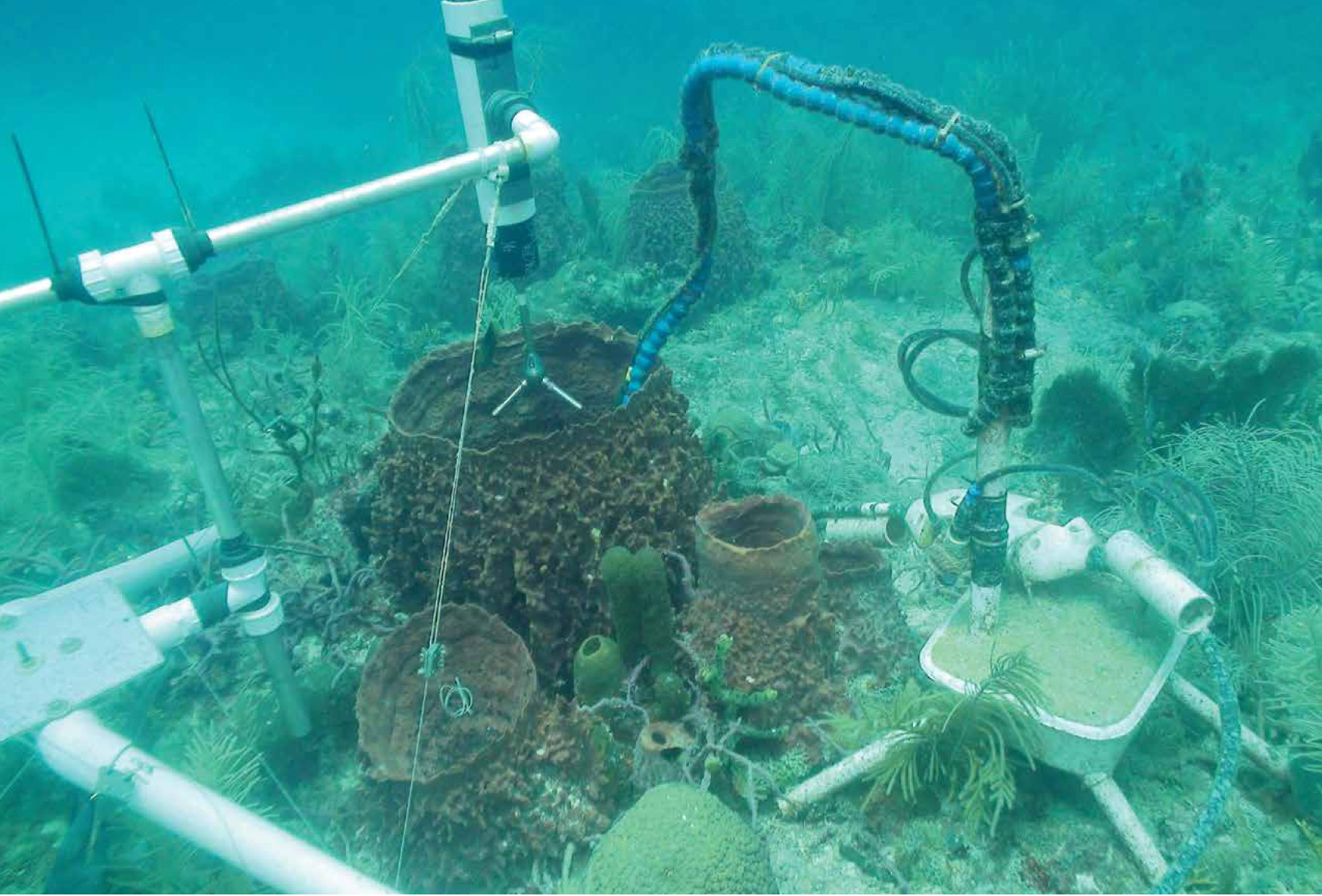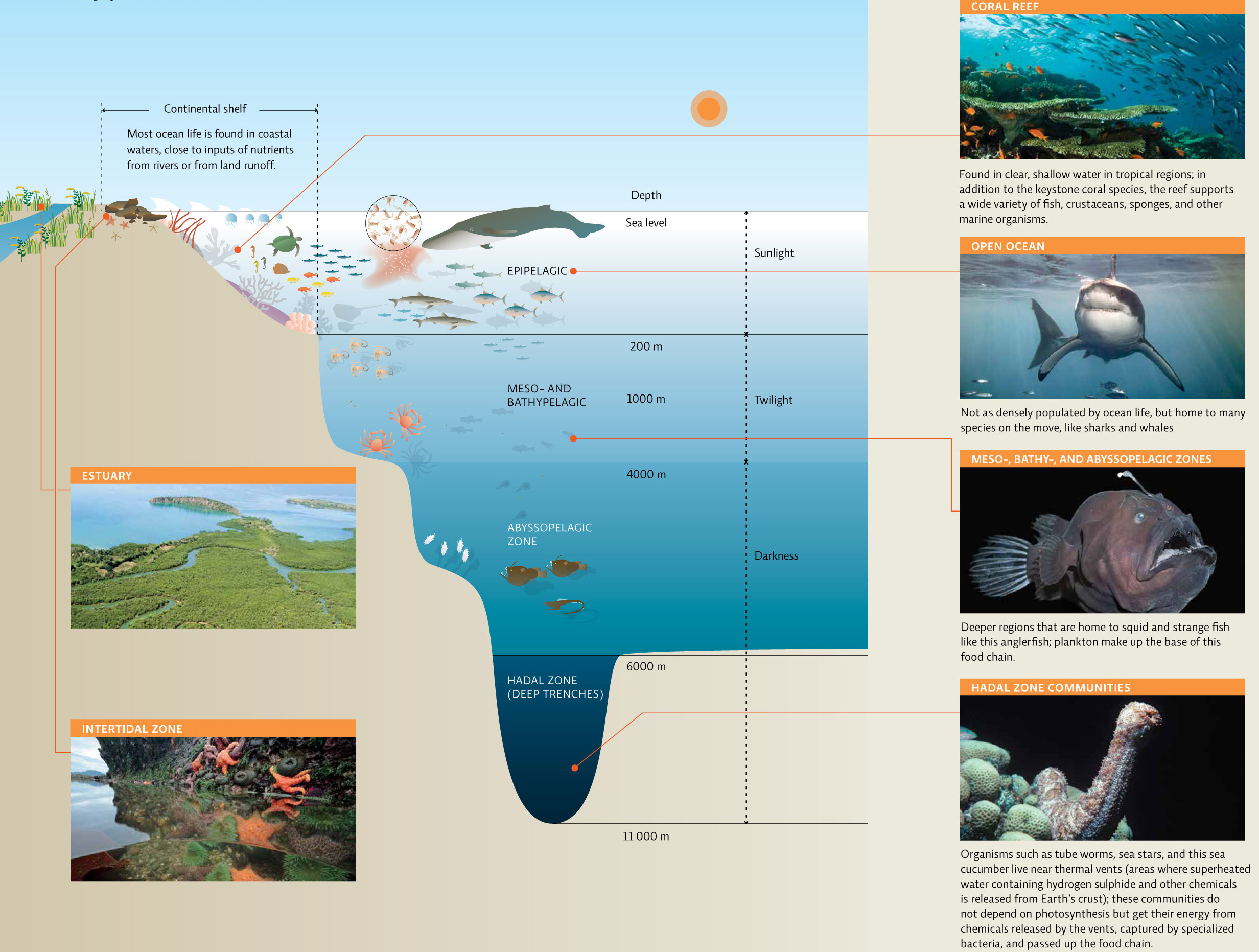13.3 Marine ecosystems are diverse.
The hidden crevices Slattery and his team were looking for are just one of countless ocean ecosystems. In fact, the world’s oceans are a wonderland of diversity. They cover about 70% of Earth’s surface, and house a greater variety of flora and fauna than all land masses combined. In shallow, temperate regions, forests of tall brown seaweed known as kelp provide both food and habitat to a wide variety of organisms. Meanwhile, algae that cling to the underbelly of sea ice in the Arctic and Antarctic Oceans forms the base of a food chain that ultimately supports whales and polar bears. Coral reefs like the one that Slattery was studying are found in shallow tropical waters between latitudes 30˚ north and south of the equator. [infographic 13.3]

Lots of ecosystems means lots of ecosystem services, including temperature moderation (ocean water absorbs a lot of heat and releases it slowly), nutrient cycling, and support for large populations of commercially valuable fish. In particular, coral reefs are especially valuable for their services: protection of coastal areas from storms, purification of the water (many reef occupants are filter feeders), provision of recreational opportunities, and support of important commercial fisheries. They even serve as a source of current and potential medicines such as antibiotics and anticancer drugs. And oceans have absorbed a good bit of the CO2 we have released due to fossil fuel burning, reducing the atmospheric warming that CO2 would have caused if all of it had remained in the air.
231

Marine ecosystems, much like terrestrial ones, vary by location. In the ocean, depth is a key determinant of environmental conditions. About 80% of all sunlight is absorbed in the first 10 metres of the water column, even more than that in murky waters. Because sunlight supplies both heat and the essential energy for photosynthesis, upper layers of the ocean are much warmer and more productive than lower layers. In fact, most life-forms are found in shallow waters where light can penetrate; both heat and productivity dwindle as we move down the water column to deeper depths.
Scientists have divided the oceans into zones, based on depth. Each region differs in the amount of available sunlight, which in turn affects rates of photosynthesis and thus strongly impacts the diversity and abundance of ocean life at that level. Ocean regions are also identified by their proximity to land; the closer to land and to rivers that empty into the ocean, the more nutrient rich the area, and thus productive, the ocean community. In fact, estuaries, regions where rivers empty into the ocean, are known as the nurseries of the sea because so many species come to these areas to spawn (see Chapter 16 for more on nutrient enrichment of estuaries). [infographic 13.4]

232
233